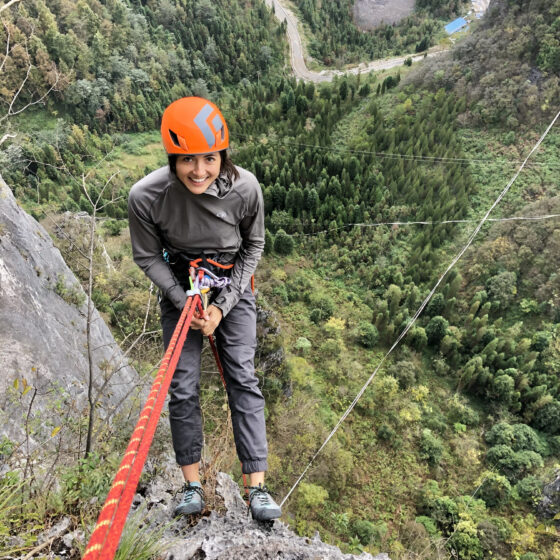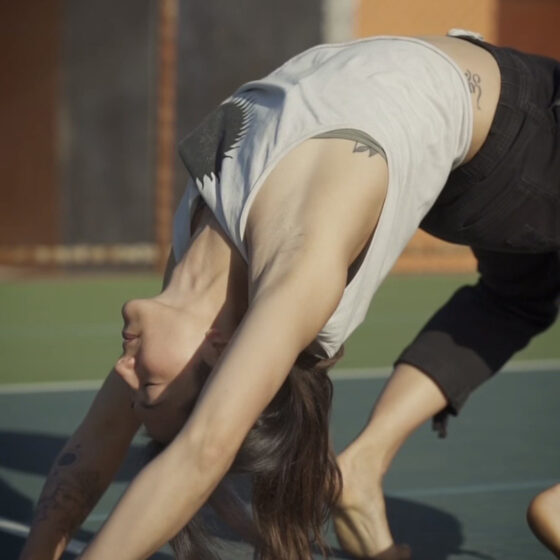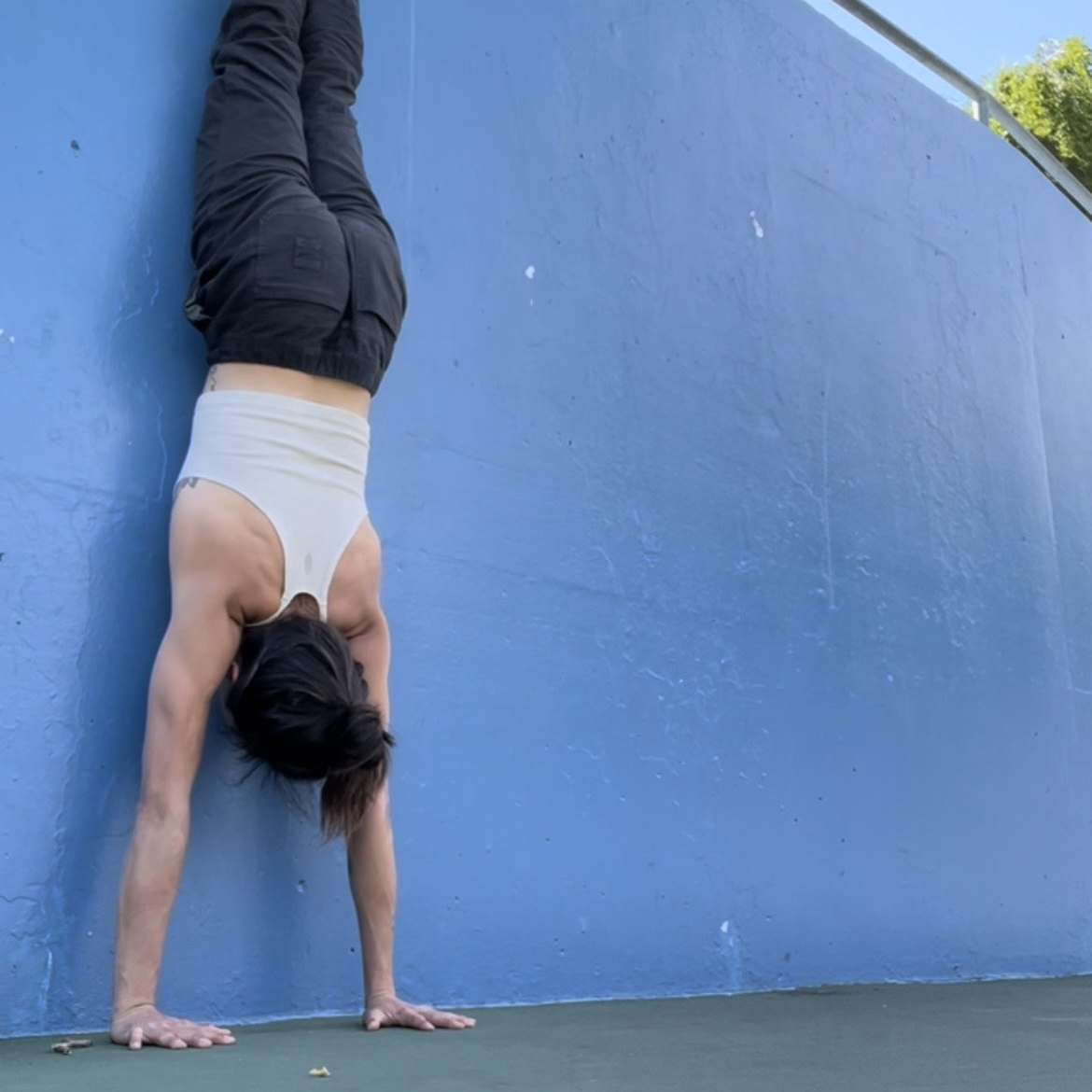Physical Therapy for Alternative Fitness Athletes
Receive 1:1 care by a Doctor of Physical Therapy who understands movement beyond generic PT exercises

Physical Therapy for Alternative Fitness Athletes

Receive 1:1 care by a Doctor of Physical Therapy who understands movement beyond generic PT exercises
Discover a specialized approach to rehabbing and optimizing movement for alternative fitness athletes.
Here at ResilientRx, we believe that alternative athletes need someone who is familiar with your sport. Generic PT exercises won’t cut it.
You deserve a physical therapist who actively practices the same movements as you.
When working with Dr. Arista Ip, you will undergo a comprehensive evaluation and treatment that includes a plan to help you return to your specific sport. We want you to feel confident and safe in your body while you train.
Alternative sports include (but not limited to): aerial art & dancing, climbing, acrobatics and gymnastics.
Climbing
Common injuries or limitations include:

Tennis Elbow:
What is it?
Tennis elbow refers to tendinosis of the lateral elbow tendons. The muscles that attach to these tendons work to extend the wrist, and are used as stabilizers while climbing. Because tendons have less blood flow than muscles, when training volume increases the muscles get stronger faster than the tendons. This leads to the tendon being loaded more than it can handle, causing pain and overuse injury.
The usual symptoms are soreness in the lateral area of the elbow after a climbing session that can easily be mistaken as muscle soreness. Rest may decrease the pain but it returns again whenever you start to increase time on the wall. In some cases, the pain can progress.
Most people complain about:
- Pain at the outside of the elbow that may improve after warming up but come back again stronger after the climbing session
- An achy feeling in the elbow
- Feeling like the forearms are permanently tight & need a massage
Golfer’s Elbow:
What is it?
Golfer’s elbow is very similar to tennis elbow except that it refers to tendinosis of the medial elbow tendons. These are the muscles that flex the fingers and are the main muscles used when gripping with the hands.
The presentation of symptoms is very similar to that of tennis elbow, except that the pain is located on the inside of the elbow.
Most people complain about:
- Pain at the inside of the elbow that may improve after warming up but come back again stronger after the climbing session
- An achy feeling in the elbow
- Feeling like the forearms are permanently tight & need a massage
Pulley Injury:
What is it?
A pulley is a slip of connective tissue that holds the tendons of the fingers to the bone. Pulley injuries are one of the most common injuries in climbing due to the high level of force that moves through the fingers while gripping the wall. If more force is placed on the pulley than it can tolerate, the tissue can be partially torn (strained) or fully torn (ruptured).
The two main ways pulley strain or rupture occurs is either:
making a dynamic move off of or onto a crimp grip
losing footing while holding a crimp grip
Most people complain about:
- Pain in the finger which can be accompanied by swelling
- Difficulty bending the finger
- Hearing a pop or snap while pulling off of a hold
Aerial Artists & Dancers
Common injuries or limitations include:

Rotator Cuff Injury
What is it?
The rotator cuff is a group of muscles in the shoulder that assist in stabilizing the shoulder. They are one of the more common areas injured among aerial artists because of the extreme ranges of motion that the shoulders are exposed to. Attempting skills that require the shoulder to be at an extreme end range of motion while using a high level of strength can overload the rotator cuffs muscles and lead to a strain or tearing.
Most people complain about:
- Pain in the shoulder
- Difficulty or pain with range of motion overhead or behind the back
- Hearing a pop or snap while in the shoulder while attempting a skill requiring a high level of strength
Neck Injury
What is it?
Because dancers and aerial artists often express themselves with movements of the head and neck through more extreme ranges of motion, neck injuries are commonly seen in these activities. Similar to what happens in the shoulder, when the neck is exposed to a range of motion either quickly or repetitively (when the neck isn’t used to visiting this particular motion so frequently) it can lead to a repetitive use injury or muscle strain.
Most people complain about:
- Soreness or pain in the neck
- Tightness in the shoulders and upper back
- Limited range of motion while turning the head (such as difficulty looking over the shoulder while driving)
* Please note: if you are experiencing symptoms of dizziness, changes in your vision, numbness or tingling in the extremities, or changes in bladder or bowel control, please seek medical attention immediately *
Acrobatics & Gymnastics
Common injuries or limitations include:

Wrist Injury
What is it?
Many skills in the field of gymnastics and acrobatics place a large amount of load through the wrists. Handstands, cartwheels, and most acrobatic skills require weight-bearing through the hands. Because of this, wrist injuries are one of the most frequent injuries seen in this population of athletes. If the wrists are being repetitively exposed to high levels to load without enough time to rest and adapt to these forces, it can lead to overuse injury, strains, and joint pain.
Most people complain about:
- Pain at the wrist with or without weight-bearing
- Wrist pain is worse after training or may prevent the ability to train specific skills
- Soreness may extend into the forearm or palm
Back Injury
What is it?
Many skills in gymnastics and acrobatics require landing with the body in a twisted or bent position, as well as asking the spine bending to extreme ranges of motion in order to initiate or land the skill. Just as with any other joint, the spine is subject to injury when exposed to extreme ranges of motion (whether the exposure is repetitive or a single dynamic movement) if it’s not strong enough to manage the loads it’s exposed to.
Most people complain about:
- Pain in the back either in the low (lumbar) region or at the junction between the mid and low back (thoracolumbar junction)
- Pain feels like soreness or achiness, and may worsen with prolonged sitting or standing
- Pain is worse after a training session involving skills requiring backbends or twisting
Hypermobility
What is it?
Hypermobility, also known as joint hypermobility or hypermobile joints, refers to an increased range of motion in the joints beyond what is considered normal or average. Normally, joints have a certain degree of flexibility that allows for movement and function while maintaining stability. However, in hypermobile individuals, the ligaments, tendons, and other connective tissues that support the joints are more lax or stretchy, allowing for greater joint mobility.
People with joint hypermobility may complain about:
- Joint hyperextension or the feeling of instability in a joint
- Frequent or chronic joint pain or pain in the surrounding muscles and tendons
- Joint clicking or popping
- Increased repetitive stress injuries surrounding a hypermobile joint
While hypermobility can provide certain advantages, such as increased flexibility in activities like gymnastics or dance, it can also present challenges and risks. Hypermobile joints are more prone to injuries, such as sprains, strains, and dislocations, due to the reduced stability provided by the lax ligaments and tendons. It’s crucial for individuals with hypermobility to maintain proper strength and stability in their joints through exercise, conditioning, and, if necessary, physical therapy to minimize the risk of injuries and promote long-term joint health.
Send Us A Message

